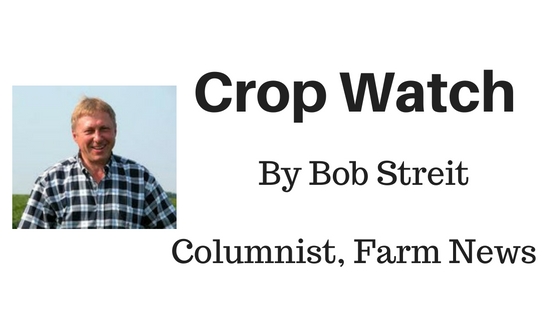
And as we await the official start of winter this week the thought that comes to mind is don’t these five weeks of cold weather count towards our total required amount of freezing temps and guarantee us an early spring?
Oh please to whoever is in charge, make that happen. Actually this past weekend when temps dove to a toasty -29 in way-up-there northwest Iowa, it helped Sunday afternoon’s +5 with sun feel balmy. It’s all a matter of what we and our bodies get used to.
Christmas will be here by this coming weekend, and it seems like Thanksgiving was just yesterday. That period always flies by. That means the tree is up and the ovens in many houses have been busy baking the early meals and many different foods that get consumed over the Christmas and New Year’s period.
A few more decorations that could be put up can stay in their boxes because they can be overdone. Here we just hope we get the tree up before the kids start coming through the door. It’s the thought that counts.
And isn’t it nice to hear announcers and businessmen free to say ‘Merry Christmas’ and ‘God Bless You’ without being corrected by the PC police. Even if it in commercials it is nice to continue with the traditions we grew up in.
Most of us at one time got to be one of the shepherds or wise men in a Christmas play and it all seemed so wondrous. So enjoy the season, we hope your spouses, kids and grandkids all get a chance to enjoy the Holiday/Holy Day and being with each other.
Recognize what the season is about and all that has happened the last 2016 years. Be safe. And then one week later root for your favorite teams.
Cold weather benefits
I am not sure if it’s gallows humor, but more than one person has mentioned the good side of cold weather. They recognize repeated freezing spells helps to break up shallow compaction layers the trips with the combines, wagons, or semis made in the fields this fall. Depending on the depth of this layer one winter may or may not be enough to fracture this layer and deep tillage would have helped the cold air to penetrate deeper.
Then it is recognized that having freezing conditions gets rid of many of the pesky insects like flies, mosquitoes, grasshopper and crickets. The adults typically get frozen for good and become food for something or somebody, but the eggs they laid persist into the spring ready to hatch with spring conditions.
A number of the crop-damaging insects survive in the egg or larval stages and can tolerate subzero temps as long as they don’t desiccate. Rootworm eggs and corn borer are in that category. Having a minimal amount of snow to insulate the topsoil helps to destroy them, but can also be tough to shallow water lines.
Most of the microbes living in the soil slow their metabolism but will still go through their life cycles. Earthworms and night crawlers, both considered very beneficial to the soil, move down to where it is warm several or many feet below the soil surface.
Weed seeds also find ways to survive. They typically store enough energy in the forms of oils or starch to continue in a dormant state, ready to emerge as the soils warm to specific temperatures favorable to germination.
Small plants that germinate late in the season, even if they are known perennials, have to reach certain size and store enough energy in their roots if they are to survive the winter.
Dandelions, thistles, alfalfa and strawberry plants are in this category.
Recent learnings
There was a meeting in Ames last week where there were a few good presenters. One of them was a renowned plant pathologist and physiologist who spoke about how proper crop nutrition can help minimize crop diseases and that most of us still need to boost our knowledge and fertility practices to maximize our production and minimize our losses and expenditures on curative diseases products and practices.
There was a weed specialist from the University of Arkansas, Dr. Jason Norsworthy, who has been traveling through the Midwest quite a bit in the last two or three years to educate farmers and Extension personnel the management of yield-limiting weeds.
In particular he has followed Ford Baldwin as the acknowledged expert of Palmer amaranth. He first told us about how it can grow between 1.5 to 2 inches per day, produce over a million seeds per plant, can emerge clear through August in most seasons, and can grow to 10 feet.
He followed this by noting that the seeds typically survive only four years in the soil, has not really adapted to being this far north, and doesn’t fare well in no-till conditions. So we have to use those known weakness in devising a management program.
As others have advised, it will take a well-planned program utilizing overlapping residual herbicide programs to prevent the small plants from emerging. He did say that an over-reliance on one herbicide in our two major crops for 20 years selected for it in a heterogeneous pigweed population that contained enough outliers that had natural tolerance to that herbicide.
In that case, the public opinion and general consensus among the people promoting the product were 99.999 percent wrong. Now it is everyone’s problem and they have the farmers’ money. Adding a third or fourth crop including small grains cut in the summer, or a perennial crop would help upset the niche that it will fill.
Norsworthy showed a slide of a barnyard grass plant pulled from a rice paddy in Vietnam that has become hand-weeding resistant. All it had to do was begin to grow its leaves differently so it more closely resembled the rice it was infesting, therefore it did not get pulled by the people walking the paddy pulling the normal grass plants out.
That weed found a way to escape control and produced seeds also sharing the similar appearance. If anyone is counting, he said his next trip was going to be his 13th into Nebraska. It was his sixth or seventh trip into Iowa working to educate us.
Sue Martin, a commodity advisor, has closely studied the grain supplies and tried to match the supply against annual consumption among the many countries.
Based on the increasing demand and consumption among the improving economies and surge in middle class consumers, she could project a ray of hope for the coming marketing season.
Even though grain supplies are at very high levels the usage is also continuing very high. Maintaining friendly trade among our traditional partners was something that would have to continue.
Ethanol exports are on the increase and prices remain favorable. Just like during the 1980s extra usage and a drought or two will have to use up those surpluses.
The sponsors of the meeting were the people of the Brazilian Spray Tech company. What they have to offer is a series of spray additives that will let farmers better control weeds without burning the leaves so badly that growers typically wonder if any of the leaves are going to regrow.
Their offering of upper grades of the same products, which include additional minerals and amino acids that add to plant health and final yields, has advantages over the status quo.
Seeing the plants spend three weeks to recover from severe burning left many growers thinking there had to be an improvement in how they were going to manage the tough weeds.
Crop advantage
In the two or three weeks after the new year begins, the Extension groups will be holding a series of meetings around the state focusing on the designated hot topics among farmers.
These are typically a good get-together where farmers that may not have seen each other much during the growing season can visit and hear the same message.
Check for the meetings that are scheduled for your areas.
Bob Streit is an independent crop consultant and columnist for Farm News. He can be reached at (515) 709-0143 or www.CentralIowaAg.com.

